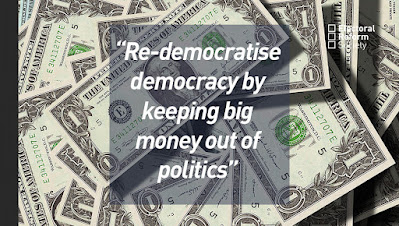. . . the way California goes, so goes the rest of the country
L.A.'s Mayor, Eric Garcetti, released a broad-ranging plan that outlines his vision for environmental goals and programs in Los Angeles over the coming decades to combat L.A.’s image as a smog-choked, car-worshipping, insane freeway-entangled sprawlsville.
The 105-page booklet — simply titled, in a play on words, “the pLAn." The report sets objectives such as the increased use of electric vehicles, more reliance on solar power in the public and private sectors and better monitoring of air quality. Additionally it calls for a 25% reduction by 2035 in greenhouse gas emissions. It also envisions the installation of 1,000 electric vehicle charging stations in two years.
Other elements are already are in place. For example, a reduce per-capita water use by 22.5% by 2025 and cut by 50% the city's importation of water from outside sources — phasing out the city’s use of electricity from coal-fired power plants and lowering the city's temperature by 3 degrees over the next two decades, by planting more street trees and increasing use of “cool roofs” that absorb less heat.
The Mayor is a big backer of bike culture. At a mayoral forum last year, Garcetti pledged his commitment to CicLAvia, a recurring event that closes miles of L.A. streets to cars. He said he hopes to make it a permanent monthly tradition -- thanking cyclists for introducing bike culture, urban farmers for introducing community gardens and business owners for re-purposing dead alleys.
That's quite a plan. If it works, L.A may actually become liveable.
It seems like real change only starts to happen when we become threatened and the lack of water, or no water, is at the top of the serious threat list.
Maybe the California drought is a good thing? The proposed L.A. plan is something that should have been implemented years ago. Now it's at a critical stage. It has to be done.
So, will the rest of country follow the pLAn?





Comments
Post a Comment